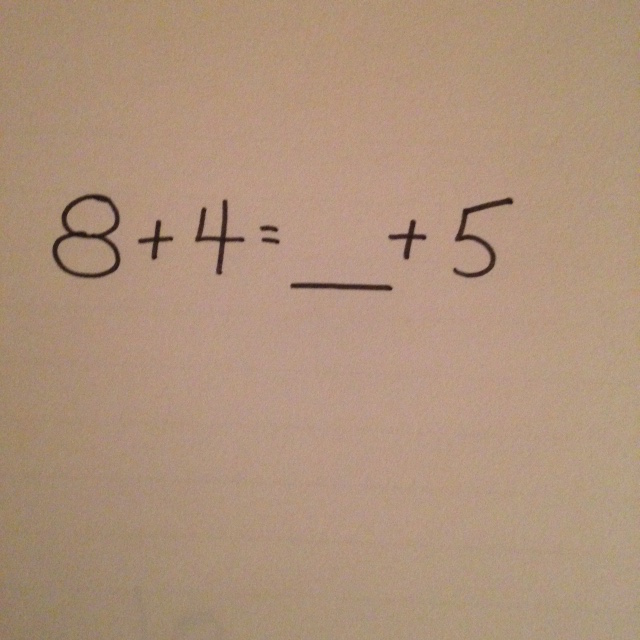How often do we make assumptions about students’ mathematical understanding in the younger grades because they are able to compute equations such as 5+7 or 12-7? In a Gr 2-3 class we asked the students to independently solve the following question:
8 + 4 = _ + 5
Just as the the research says almost all of the students chose the answer 12 to put on the line and a few put 17. Think about why they may have done this.
In response to this, the teacher showed an equal sign and asked the students what this meant. What we learned from this question was that all of the students could “name” the equal sign, but had various ideas about what it actually meant. Emmy said, “It means to add them up together like 4+4=8. I asked her if we always have to add when we use the equal sign. She thought about that for a minute and said you could subtract. Len said, ” 2+3 = 5 They are just 2 plain old lines.”
The teacher then brought out a balance scale and told them that the equal sign is like a balance, whatever is on one side has to be the same amount as on the other side. She put 15=10+5 on the board and asked if this was true or false. A student promptly told her that she had written it backwards. From that student response the teacher realized that she always wrote number sentences the other way.
Reflection Questions :
Do we assume that students understand the meaning of symbols just because they can name them?
Do we always present information in the same way, therefore, impacting student understanding?
The teacher learned some valuable information from her students that morning and made some strategic decisions about what to focus on in the upcoming weeks. For the next several lessons the class spent time constructing their understanding of equality and the understanding of the equal sign. Think about how this is going to impact them as they move along in their math journey!
What strategies or lessons do you use to help your students construct understanding of equality and the equal sign? Please share so that we can all continue to learn, not only from our students but each other.

